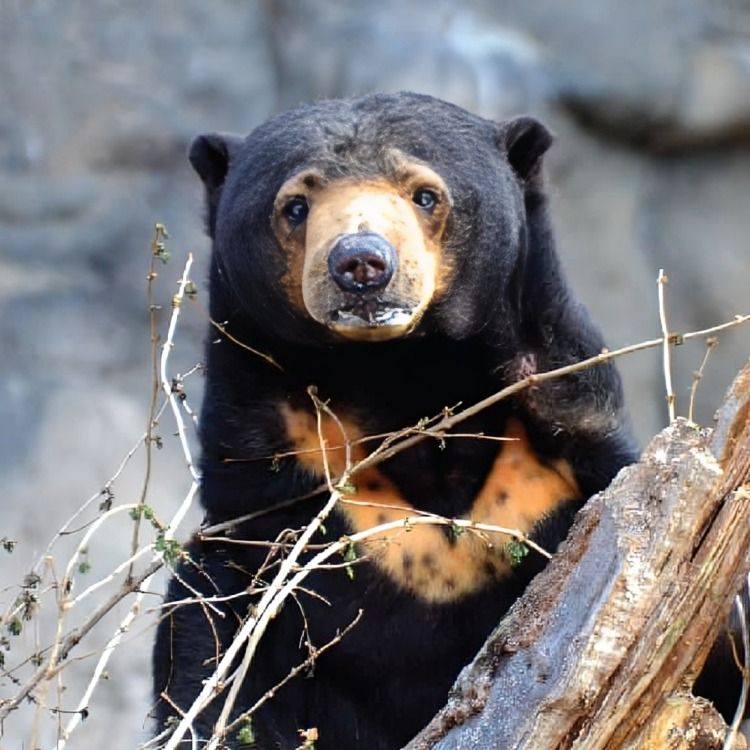
“
1
Bears, fascinating creatures known for their strength and resilience, captivate both young and old with their diverse adaptations and behaviors. Their ability to thrive in a variety of habitats—from dense forests and mountains to icy tundras—reflects their remarkable adaptability and evolutionary success. Join us as we embark on a journey to explore 20 intriguing facts about bears. Through these insights, we will shine a light on their unique habitats, fascinating behaviors, and the pivotal role they play in maintaining ecological balance in our natural world.1
1
”
There are eight bear species worldwide, including iconic ones like the polar bear, grizzly bear, and the giant panda, each adapted to its unique habitat. These species exhibit a range of behaviors and physical characteristics tailored to their environments.1
Bear cubs stay with their mothers for about two to three years, learning essential survival skills like foraging and avoiding predators. This extended maternal care ensures they are well-prepared to face the challenges of the wild.2
Bears have varying lifespans depending on the species. In the wild, bears generally live between 20 to 30 years. For example, black bears typically live up to 25 years, while grizzly bears can live around 20 to 25 years, influenced by environmental factors.3
The pregnancy period of bears, also known as the gestation period, varies among different species but generally lasts about 6 to 8 months. This period is crucial for the development of cubs, who are born in a vulnerable state.4

Brown bears can weigh up to 1,500 pounds and stand over nine feet tall on their hind legs, varying greatly in size among species. These impressive sizes contribute to their status as one of the top predators in their ecosystems.
The largest living bear is the polar bear (Ursus maritimus), found in the Arctic. Adult males weigh 400–600 kg and measure 2.4–2.6 m long. The Kodiak bear (Ursus arctos middendorffi), though shorter, is more robust.5
Bears are omnivores, consuming plants like berries and nuts as well as meat from fish, small mammals, and occasionally larger prey. This varied diet helps them meet their nutritional needs in different environments.6
In 1960, a polar bear weighing about 900 kg (1,984 lb) was shot in the Chukchi Sea, Alaska. Measuring 3.5 m (11 ft 5 in) long and 1.5 m (4 ft 11 in) around, it remains a candidate for the heaviest wild bear.7

Bear cubs are incredibly small when born, weighing only about 1 pound (0.45 kg) for species like the black bear and grizzly bear. Despite their tiny size, they grow rapidly under the care of their mother, gaining strength and independence.
Bears possess the largest brain relative to their body size among carnivores. This notable brain-to-body ratio supports their complex behaviors and intelligence, making them stand out among their predatory peers.8
Some bears, such as the panda, are exceptional climbers. They use their climbing skills to forage for food, escape predators, and navigate their forested habitats, showcasing their agility and adaptability in the wild.9

Bears like the American black bear are excellent climbers, using their strong claws and agility to ascend trees quickly. This skill allows them to escape predators, find food, and create safe resting spots.
Black bears aren’t always black; they can also be brown, cinnamon, or even blonde. Their fur color varies widely due to genetic factors, and different color phases are observed across their range, from North America to parts of Canada.10
Bears communicate through various vocalizations like growls, roars, and grunts, each serving different social or warning purposes. These sounds help them coordinate activities, establish dominance, and maintain social bonds within their groups.11
Bears face significant threats from habitat loss, human-wildlife conflict, and illegal hunting, impacting their populations worldwide. Conservation efforts are crucial to protecting these majestic animals and ensuring their survival for future generations.12

Juno, a polar bear at Toronto Zoo, was named the official live mascot and Honorary Private of the Canadian Army on February 27, 2016. She was promoted to Honorary Corporal on her first birthday and to Honorary Master Corporal on November 11, 2020.
There are approximately 180,000 to 200,000 brown bears globally, with the majority residing in Alaska, Canada, and Russia. These regions offer vast, largely unpopulated forests where brown bears can roam freely and thrive.13
Bears have a strong affinity for honey and will go to great lengths to obtain it. They are known to brave bee stings and climb trees just to reach beehives, driven by their irresistible craving for this sweet treat.14

The smallest bear species is the Malayan sun bear (Ursus malayanus), found in subtropical India and Southeast Asia. Adults average 1.1–1.5 meters in length, weigh 30–65 kilograms and stand about 70 centimeters at the shoulder.
Many bears hibernate through the winter to conserve energy. During this period of deep sleep, their metabolic rate significantly drops, allowing them to survive without eating or drinking for months while they endure the cold season.15


